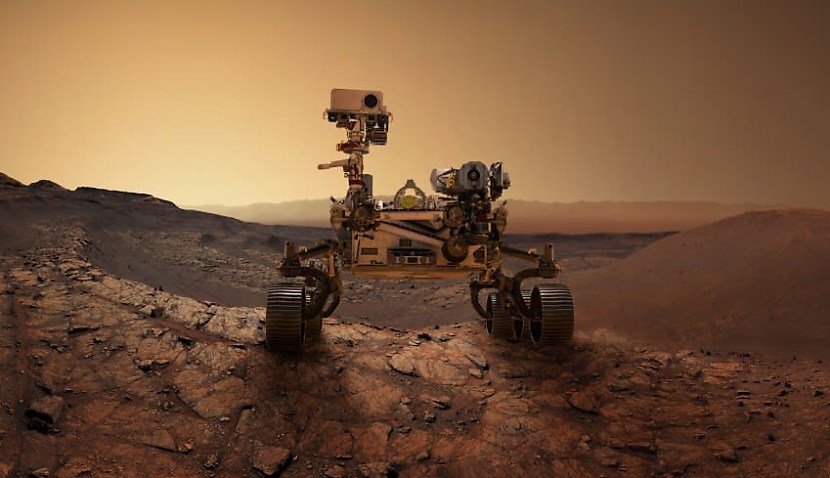
The team hopes the discovery of igneous rock will also help provide evidence that there was once life on the Red Planet because it can potentially produce habitats for microbial life.
The Perseverance rover has been studying Mars since July 2020. It found its latest discovery on the Jezero Crater, a 45-kilometre-long stretch of land north of the Martian equator.
NASA’s ambitious next step will see a rocket blast-off from Mars to return the samples back to Earth in the early to mid-2030s.
Queensland University of Technology’s (QUT) Dr David Flannery is a long-term planner for Perseverance and said the discovery would provide a better understanding of warmer and wetter climatic periods in Mars’ past and evidence of past life.
“It was a surprise that we didn’t find sedimentary rocks on the crater floor, but also ideal because finding a datable igneous sample was one of the main mission goals,” he said.
“Ancient igneous rocks will allow us to date a several billion-year-old rock with very high precision. This will provide important timing and duration constraints on the history of Jezero Crater and its surrounding region.
“So effectively, we landed on exactly the thing we needed to help us with one of our other main goals, which is to find evidence of past life.
“If we find that this lake was a habitable environment, for example, we will have an age constraint on when it was habitable.”
Dr Flannery said that reactions of igneous rocks with water on Earth produce diverse habitats for microbial life. Rocks on the Jezero Crater floor appear to share the same characteristics, with the potential to record biosignatures of ancient habitats.
The olivine cumulate – igneous rock – was identified by its composition and mineralogy, including diffraction peaks, known as changes in the atomic structure of the rock.
The discovery was made possible by using the crucial PIXL instrument (Planetary Instrument for X-ray Lithochemistry) that was led by QUT’s Dr Abigail Allwood.
“The PIXL team used the maps of fluorescence and diffraction of X-rays to prove that the rock formed by cooling of a melt,” said Dr Allwood.
“This kind of definitive observation is rare in planetary science. Usually, it’s easier to add more alternative hypotheses than it is to be able to absolutely refute any hypothesis with confidence.”
The Mars Perseverance mission is planning to cache 30 rock samples ready for return to Earth.
In February, NASA selected Lockheed Martin Space for the contract to build the first ever rocket that will launch from Mars and return Perseverance’s samples from the surface back to Earth.
Lockheed Martin of Littleton, Colorado will build the Mars Ascent Vehicle (MAV), a small, lightweight launch vehicle.
Angie Jackman, a NASA veteran and the MAV project manager said in a statement on 8 March, “Together we are working to transform the Mars Ascent Vehicle from a drawing-board concept to an executable project.
“We went through exhaustive design iterations to reduce vehicle mass, ensure automated launch capability, and accurately achieve the orbit necessary to rendezvous with the Earth Return Orbiter and transfer samples for flight back to Earth.”

Adam Thorn
Adam is a journalist who has worked for more than 40 prestigious media brands in the UK and Australia. Since 2005, his varied career has included stints as a reporter, copy editor, feature writer and editor for publications as diverse as Fleet Street newspaper The Sunday Times, fashion bible Jones, media and marketing website Mumbrella as well as lifestyle magazines such as GQ, Woman’s Weekly, Men’s Health and Loaded. He joined Momentum Media in early 2020 and currently writes for Australian Aviation and World of Aviation.
Receive the latest developments and updates on Australia’s space industry direct to your inbox. Subscribe today to Space Connect here.












